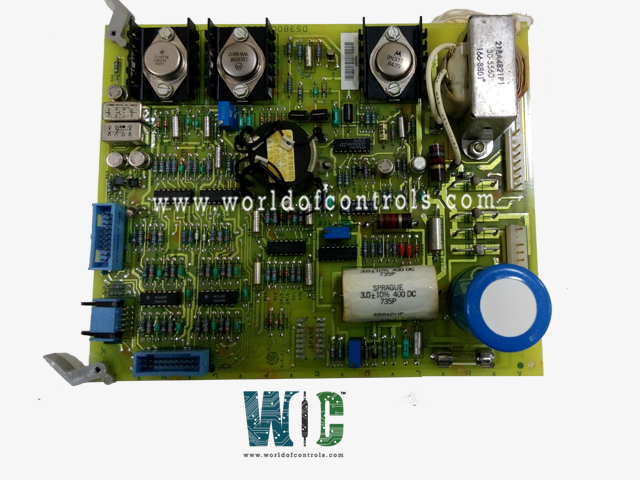
World Of Controls understands the criticality of your requirement and works towards reducing the lead time as much as possible.
DS3800NSCB1N - Speed Current Regulator Auxiliary Board is available in stock which ships the same day.
DS3800NSCB1N - Speed Current Regulator Auxiliary Board comes in UNUSED as well as REBUILT condition.
To avail our best deals for DS3800NSCB1N - Speed Current Regulator Auxiliary Board, contact us and we will get back to you within 24 hours.
SPECIFICATIONS:
Part No: DS3800NSCB1N
Manufacturer: General Electric
Product Type: Speed Current Regulator Auxiliary Board
Voltage Ranges: +/-25mV,
Operating Mode: Simplex
Series: Mark IV
Availability: In Stock
Current Range: +/-20mA
Dimensions: 7.14 × 4 × 1.5 in
Operating Temperature: 0 to 50°C
Country of Origin: USA
FUNCTIONAL DESCRIPTION:
DS3800NSCB1N is a Speed Current Regulator Auxiliary Board manufactured and designed by General Electric and is part of the Mark IV Series used in GE Speedtronic gas turbine control systems. The GE Speedtronic Speed Current Regulator Auxiliary Board is a critical component used in the Speedtronic control systems developed by General Electric. These systems are primarily employed in gas turbines and other industrial applications to provide precise control over motor speed and current. The auxiliary board enhances the functionality and reliability of the overall control system by ensuring optimal motor performance and protection.
KEY FEATURES:
Speed Regulation:
Current Regulation:
Objective: Control the current to prevent overloading and ensure efficient power usage.
Mechanism: Monitors current levels through sensors and adjusts the power supply to maintain safe and optimal current flow
Protection Features:
Feedback Control:
COMPONENTS AND INTERFACES:
APPLICATION IN CONTROL SYSTEM:
Gas Turbines:
Industrial Automation:
Power Generation:
Oil and Gas:
INTEGRATION PROCESS:
WOC has the largest stock of replacement parts for GE Speedtronic Gas turbine control systems. We can also repair your faulty boards and supply unused and rebuilt boards backed up with a warranty. Our team of experts is available round the clock to support your OEM needs. Our team of experts at WOC is happy to assist you with any of your automation requirements. For pricing and availability on parts and repairs, kindly contact our team by phone or email.
How does the board regulate motor speed?
The board regulates the motor speed by receiving feedback from speed sensors, processing this data, and adjusting the power supply to the motor to maintain the desired speed. This closed-loop control ensures stable and efficient motor operation.
How does the board protect against overcurrent?
The board monitors the current flow through sensors and compares it to predetermined safe levels. If the current exceeds these levels, the board automatically reduces or cuts off the power supply to prevent damage to the motor and associated components.
What types of motors can this board be used with?
The GE Speedtronic Speed Current Regulator Auxiliary Board is compatible with various types of motors, including those used in gas turbines, industrial machinery, and power generation systems.